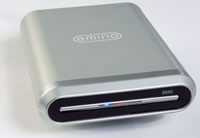Disney and Intel are to launch an interesting broadband content service in Japan – an interactive version of some segments form Fantasia 2000. The three initial sections are “Pomp and Circumstances”. “Rhapsody in Blue” and, always a favourite, “Carnival of Animals”.
Users will be able to enjoy interactive special effects, arrange the scenes’ backgrounds, and dance with Donald and Daisy. Which can’t be too bad. There’s a preview that I’ve linked to below – though when they say broadband, they mean broadband: it takes ages to load.
Though currently rather limited in scope, the product hints at what Disney might be able to offer in the future with its rich range of intellectual property.
Koji Hoshino, President of Walt Disney Japan said: “As a leading media company, Disney is committed to delivering content which satisfies a broad range of consumer demands utilizing new technologies … The achievement with Mickey Symphony has taken us to a new level of content creation and distribution. Intel and Disney, leaders in technology and media respectively, joined forces to create this milestone product in Japan and expect to continue further expansion of our collaborative relationship.”
Disney believe that this will be just the first of many such products, and that it will act as a catalyst for increasing public demand for broadband content and services.
 Amino, the broadcast electronics company based in Cambridge, UK, have unveiled the AmiNET500, a tiny, low-cost, Internet Protocol Television (IPtv) set top box with built in PVR. The diminutive 184mm x 240 x 56 box can hold up to 40 hours of programming on its 80Gb drive. It runs on a Linux platform and uses a Java-based PVR application
Amino, the broadcast electronics company based in Cambridge, UK, have unveiled the AmiNET500, a tiny, low-cost, Internet Protocol Television (IPtv) set top box with built in PVR. The diminutive 184mm x 240 x 56 box can hold up to 40 hours of programming on its 80Gb drive. It runs on a Linux platform and uses a Java-based PVR application Pace, UK-based supplier for TV-focused technology, announced what they claim is the world’s first mobile personal video recorder of payTV.
Pace, UK-based supplier for TV-focused technology, announced what they claim is the world’s first mobile personal video recorder of payTV.